Renovating your home can feel like standing at the base of Mount Everest without a map. Where do you even begin? Should you tackle that dated kitchen first, or fix the leaky roof? What if you install beautiful new floors only to ruin them during wall repairs?
Here’s the truth: The correct order for a home renovation is to work from the outside in and the top down. Start with foundational repairs that protect your home’s structure (roof, foundation, water issues), followed by demolition and interior systems (HVAC, electrical, plumbing). Only then should you move to visible finishes like plasterboard, flooring, and final fixtures.
This guide will give you the exact roadmap you need to renovate with confidence and avoid costly mistakes that plague 70% of DIY renovators.
What You’ll Learn in This Guide:
- How to accurately estimate renovation costs in the Sydney market
- A step-by-step process to build your bulletproof budget
- Expert tips from local contractors to avoid going over budget
- Which renovations offer the best return on investment for Sydney properties
- Real cost breakdowns for kitchens, bathrooms, and whole-house renovations
Your Actionable Renovation Master Plan
How to Create Your Renovation Timeline: A Step-by-Step Template
To create a renovation timeline that actually works, list all tasks, estimate their durations, and map out which tasks depend on others. Begin with large-scale structural work, then systems (plumbing/electrical), and finally cosmetic finishes. Always add a 15-20% contingency buffer for delays—trust me, you’ll need it.
The Master Renovation Checklist
Phase 1: Planning & Foundational Repairs
- Set your budget (and add 20% for surprises)
- Hire professionals for structural assessments
- Address roof repairs or replacement
- Fix foundation cracks or drainage issues
- Replace failing windows and doors
Phase 2: Demolition & Structural Work
- Complete all tear-out work
- Move or remove walls (with proper council approvals)
- Address any termite or rot damage discovered
Phase 3: Behind-the-Walls Systems
- HVAC installation or upgrades
- Electrical rough-in and panel upgrades
- Plumbing rough-in and pipe replacement
- Get all inspections passed before proceeding
Phase 4: Closing Up the Walls
- Install insulation (don’t skimp here)
- Hang and finish plasterboard
- Complete all dusty work like sanding
Phase 5: Interior Finishes (Top-Down)
- Paint or texture ceilings first
- Paint walls (easier without floors in place)
- Install flooring throughout
Phase 6: Room-Specific Installations
- Kitchen and bathroom cabinetry
- Benchtops and splashbacks
- Plumbing and electrical fixtures
Phase 7: Final Touches
- Skirting boards and architraves
- Door hardware and switch plates
- Final paint touch-ups
Your Immediate Action Items
- Do a walkthrough: Go through your home with this checklist and tick off every task that applies to your project.
- Identify your top 3 “must-fix” items: These become your immediate starting point.
- Get quotes early: Even if you’re months away from starting, getting professional quotes now helps you budget realistically.
Common Sequencing Errors to Avoid
Problem: “I installed my new hardwood floors before sanding the plasterboard. Now they’re covered in fine dust that’s embedded in the grain.”
Solution: Always finish dusty work like plasterboard before installing finished floors.
Problem: “We painted before fixing the roof leak. Now we have water stains on our fresh paint.”
Solution: Address all water issues before any cosmetic work.
The First Big Decision: What to Fix vs What to Upgrade
What Should You Renovate First?
Always fix problems that can damage your home before starting any cosmetic upgrades. A leaking roof might not be Instagram-worthy, but it’s far more urgent than an outdated kitchen. Water damage can turn a $5,000 repair into a $50,000 disaster if left unchecked.
The Fix vs Upgrade Priority Matrix:
| Priority Level | Category | Examples | Why It’s First |
|---|---|---|---|
| CRITICAL (Fix Now) | Water & Structure | Leaking roof, foundation cracks, rising damp, wood rot | Prevents catastrophic and expensive long-term damage. |
| HIGH (Address Soon) | Safety & Major Systems | Outdated electrical, asbestos, failing HVAC, structural cracks | Prevents safety hazards and major system failures. |
| MODERATE (Plan For) | High-ROI Upgrades | Minor kitchen remodel, bathroom renovation, deck addition | Adds significant resale value and improves daily function. |
| LOW (Do When Ready) | Cosmetic Changes | Painting, new light fittings, landscaping | Low-cost, high-impact changes that can be done anytime. |
The Home Health Check: Your Self-Assessment Tool
Answer these questions honestly:
- Do you see water stains on your ceilings or walls?
- Do your lights flicker or circuit breakers trip frequently?
- Are there visible cracks in your foundation or walls?
- Do you smell mould or mustiness anywhere?
- Are your energy bills unusually high?
If you answered “Yes” to any structural or water-related question, your next step is to get a professional inspection before any cosmetic work begins.
Which Room Should You Renovate First for the Best Return on Investment?
Kitchens and bathrooms consistently deliver the highest return on investment in Australia’s property market. According to recent data, a minor kitchen renovation returns about 80-85% of its cost in increased home value, while bathroom renovations return 75-80%.
Best Renovation Choices by Goal:
Best for Increasing Resale Value:
- Minor kitchen remodel (new benchtops, splashback, and appliances)
- Bathroom addition or major renovation
- Adding a deck or outdoor entertaining area
- Converting garage to living space
Best for Improving Daily Life:
- Creating a home office (especially post-2020)
- Upgrading the main bedroom and ensuite
- Installing proper storage solutions throughout
- Improving natural light with skylights or larger windows
Best for a Tight Budget:
- Full-house repaint (biggest impact for lowest cost)
- Updating all light fittings and switches
- Replacing cabinet hardware and door handles
- Refreshing tapware throughout
The Kitchen Deep Dive: Your Order of Operations
In What Order Should You Renovate Your Kitchen?
The correct sequence for a kitchen renovation prevents expensive rework and ensures a professional finish. Here’s the exact order professionals follow:
- Design & Planning: Finalise your layout with accurate measurements
- Demolition: Remove old cabinets, benchtops, and flooring
- Structural Changes: Move walls or windows if needed (with permits)
- Plumbing & Electrical Rough-in: While walls are open
- Plasterboard & Paint: Paint before cabinets for cleaner lines
- Flooring: Install before cabinets in most cases
- Cabinets: Level and secure base cabinets first
- Benchtops: Template after base cabinets are installed
- Splashback: Install after benchtops are in place
- Appliances: Connect and test all functions
- Fixtures & Final Touches: Sink, tapware, lighting, and handles
Progress Checkpoint: You’re on the right track if all your in-wall inspections for plumbing and electrical are passed before any plasterboard is installed. This single checkpoint can save you thousands in potential rework.
Your Next Steps
Successful renovation isn’t about perfection—it’s about following the right sequence. Start with this simple three-step approach:
- Assess: Use the Home Health Check to identify critical repairs
- Plan: Create your timeline using the Master Checklist
- Execute: Follow the proper sequence, even when you’re tempted to skip ahead
Remember, every professional renovator follows these same principles. The difference between a smooth renovation and a nightmare isn’t talent—it’s simply knowing the right order.
The path from your current home to your dream home is clear. You now have the roadmap. Time to begin your journey, one properly sequenced step at a time.




